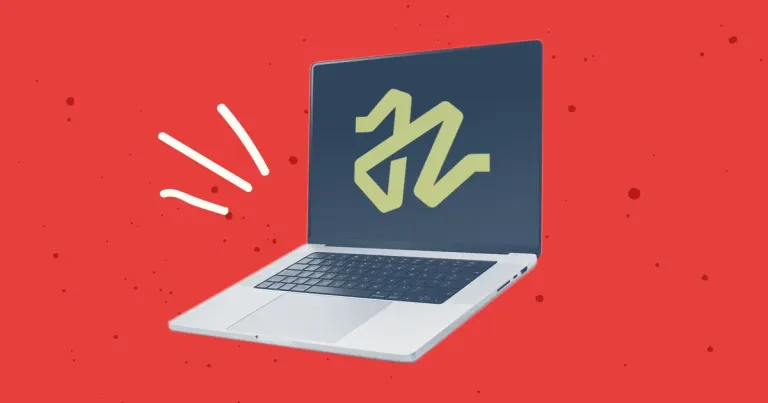
Discontinuing CP Filters for Craft CMS Commercial Plugin Sales
We’ve discontinued CP Filters for Craft CMS 5. Lab Reports and Link Vault will be updated. We still use Craft, and want to focus on creating great websites for our clients.

In a previous post I wrote about our terrible, horrible, no-good very bad “perfect lull,” where work for a number of project-based clients simultaneously dried up and we were left with a few months of very little client work. We didn’t have any real recurring revenue, so I knew we needed to start selling productized services and retainers.
Our revenue was suffering, so we were in that mode where you think it’s a good idea to take anything. Our thinking was that by adding services (actually diluting the reason anyone would hire us) we could magically add more work. (Do not remind me of the dark 2 week period where we dabbled with WordPress development.)
In addition to expanding, productizing and packaging our services, we wanted to get a sales funnel and marketing plan in place. We decided we were going to be “full service” and now we just needed to attract all these amazing clients to us. How to do that? Searching around for “marketing automation” led me to discover inbound marketing, and from there, HubSpot.
Inbound marketing is the concept of...well, in HubSpot's words:
Inbound marketing is about using marketing to bring potential customers to you, rather than having your marketing efforts fight for their attention. Sharing is caring and inbound marketing is about creating and sharing content with the world. By creating content specifically designed to appeal to your dream customers, inbound attracts qualified prospects to your business and keeps them coming back for more.
And, the definition of inbound marketing via Wikipedia (article no longer exists there):
Inbound marketing is the promotion of a company or other organization through blogs, podcasts, video, eBooks, newsletters, whitepapers, SEO, physical products, social media marketing, and other forms of content marketing which serve to attract customers through the different stages of the purchase funnel.
Well, we were sold on the idea of inbound marketing. What’s the best way to go about that? It isn’t long before you discover that HubSpot is the big dog in that space.
HubSpot is a suite of tools that help companies with their inbound marketing. The tools range from social media, to a CRM, to email marketing, to a COS (“content optimization system” or, their clunky attempt at a CMS), to marketing automation.
HubSpot’s sales pitch is that all of these amazing things are on one platform.
OK. Simple. All we have to to is write…stuff…for our “dream” customers, and they’ll Google the…stuff…and find us, and we can start a long and wonderful relationship trying to shove them down our funnel until they pay us something. Sounds easy!
I looked at this whole thing as: we’re trying to help the right people find us as fast as possible. Those people who need exactly what we have to offer should get fast-tracked to a conversation with us. That is how the HubSpot suite of tools should help us.
We could have spent time building a better marketing system for ourselves - and HubSpot is so confident in their product that they explain exactly how to build a system like theirs with various other tools (they call it Frankenspot) - but we would have spent no small amount of time getting those systems to work together. I just wanted to get started creating the content we needed to attract those visitors we could help the most.
I did think it would be very convenient to have all the marketing data centralized in one place, so HubSpot was appealing in that regard. (However, having all our customer and marketing data in a single system means we have a possible single point of failure - and how good are HubSpot’s privacy policies? I’m not sure I know…). We just wanted to get rolling, so I decided to try going with the best.
This was supposed to be a year long experiment.
HubSpot contracts are annual (with no exceptions, to my knowledge) so even if this is something we decided not to continue with, we’re in it for 12 months anyway. This certainly allows us to give it a real test drive. If you have it for a year, you might as well use it, right?
I had grand plans to write a post each quarter detailing how our new inbound marketing was working for us, but I got completely burned out on HubSpot and the entire idea of inbound marketing after four months.
The problem, I’ve since learned, is that the people buying what we’re selling at Masuga Design (custom development) are far more likely to give us a call based on a referral or peer comment or testimonial. Or they contact us for a very specific thing: like an ExpressionEngine site review. All that will have to be the subject of another post. For now: on with our inbound experiment.
I live and work in Grand Rapids, MI, home of Amway (multi-level marketing! residual income! own your own “business”!), and I’m a skeptic by nature. So when we had our initial calls with a HubSpot salesperson, and so much talk revolved around being a “partner,” I decided this was probably not for us. Every other word was “partner.”
On our first call with a peppy college-aged sales consultant named “Roxy” (name changed to protect the innocent - but not far off), and she asked (very much on script) “outside of the price, what are any other objections you have?” I stumped her by saying that I didn’t want to lose our company’s identity, which was one she had never heard before. She put me on hold to go talk to someone after I said that. But…identity. I’ll tell you why that’s important.
I recently had a phone call with one of our clients who typically gives us all their web work. There was a time a year or two ago where we didn’t have the bandwidth to take on a project for them, so they gave it to someone else, and it went horribly for them. The difference, they explained, is that talking with us is dealing with real people who care, and talking with the other firm is like talking to a ticket system. That’s our identity. We’re high-quality, custom CMS developers, and you can talk to us like people.
I didn’t want to switch from our development roots. We started as developers, and continue to be effective, value-added developers on projects. If all of a sudden we were to be known as an “inbound marketing firm” I wasn’t sure that was going to sit right with me. Would I go from being a CMS expert to writing a listicle a week with a title like “The 7 Reasons You Should Badda Badda Bing Bong” because that’s a trending topic on social media?
They assured us that we could use as much or as little of HubSpot’s platform as we wanted, and that there is no requirement at all for us to turn around and offer inbound marketing retainers to our clients.
It still took a number of calls to convince me to sign on.
When I looked at it as “we’re going to try this on ourselves first, to see if it can help generate the type of traffic we want, and then, if it works, we can offer inbound marketing to our clients in the same way we offer development” I decided we should give it a try. Now we could control the whole process from building a site (or inheriting one) all the way through generating traffic, leads and sales for the client.
HubSpot is not a magic bullet, but is only a suite of tools that help you target the right people at the right time. For some reason, this expensive set of tools and the expensive onboarding that is required to come with it is what I thought we needed. Desperate times make one desperate, I guess.
And there’s no doubt it’s expensive. This was a big decision for me to make, especially when revenue was not good. That was the Catch-22. The reason we thought we needed HubSpot was because revenue wasn’t good, but we needed revenue to pay for the significant cost of HubSpot.
One of the things that helped sell me on signing on was the fact I’d been using Sidekick (since renamed HubSpot Sales) to track sent emails. This way I could see who opened an email and when, which helped me decide when to reach out and circle back with a client. This was (and remains) surprisingly effective.
I was also able to attach a document (such as a PDF) to an email and know whether or not the recipient opened it. Not only that, I could see how long they spent on any given page. For example, I sent out a PDF explaining some issues with WordPress and why you may or may not want to use it for your next web project compared with a CMS like Craft, and I could see that the prospect spent the most time on two specific pages: Price and Security. This level of insight was insane to me, that I could know this, so I wondered what sort of sales intelligence we would have if we were using the complete platform.
I finally agreed to sign up. We worked it out where they would charge us over the next 6 months, and our "training" would get rolling right away. They charged the company card, and…now we only had to spend hours getting “certified” and developing detailed personas (fake profiles that represent the types of "dream client" we want to attract), and then coming up with stuff to write for those personas as they go through their "Buyer's Journey" from "just browsing" to "ready to buy."
Hold up, shouldn’t we be spending our time…developing something for someone? What's all this about certifications? Personas? Buyer's journeys? Click bait? Listicles? Pop-ups?
I was excited to get started, but had a nagging feeling that this wasn't what I should be doing.
In the follow-up post, I cover what happened during the next few months as we experimented with HubSpot and inbound marketing.
We’ve discontinued CP Filters for Craft CMS 5. Lab Reports and Link Vault will be updated. We still use Craft, and want to focus on creating great websites for our clients.
Shopify's Dawn theme homepage may get an SEO warning for an empty h1 header element. This is a missed opportunity to help search engines understand what your page is about. Small edits to the theme code can fix this technical SEO issue.
Shopify's default Dawn theme displays empty alt tags for collection images. This post explains how to fix blank alt tags for Shopify collection images to improve your Shopify store's accessibility and SEO.


